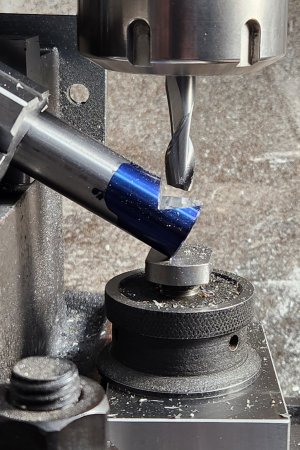Yes, it's upside down.
The tighening bolt is on the side. There was no room for me to mount it up top except near the ends of the gib, and that probably wouldn't give a lot of force. So on the side, I can put the lock at the middle of the gib.
Handle, maybe. We'll see.
The tighening bolt is on the side. There was no room for me to mount it up top except near the ends of the gib, and that probably wouldn't give a lot of force. So on the side, I can put the lock at the middle of the gib.
Handle, maybe. We'll see.





